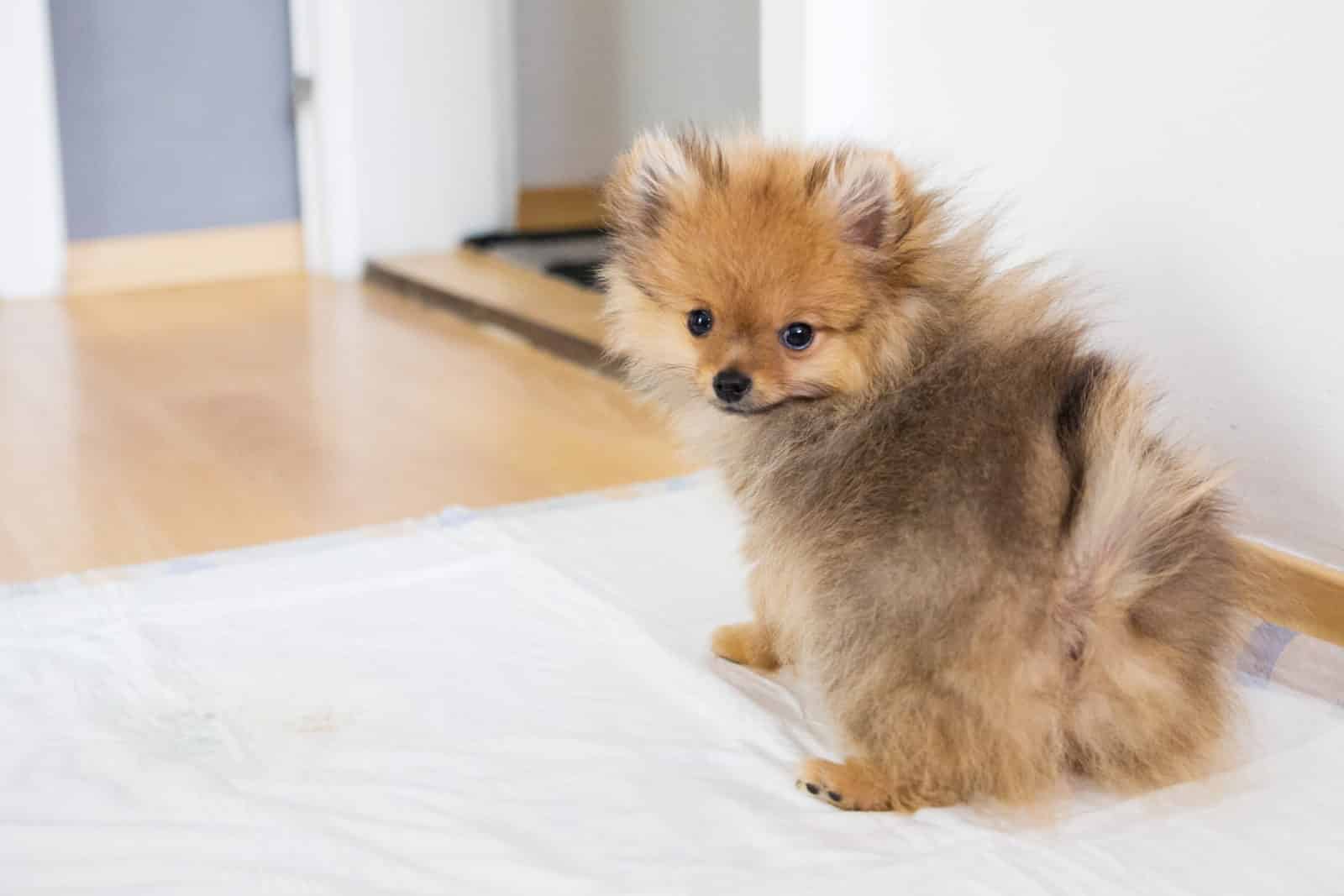Blog Housebreaking Your Puppy in Six Easy Steps
Your furry bundle of joy is now leaving not-so-joyous bundles and puddles throughout your house. What steps should you take to ensure puppy house training success for your favorite canine? here are the steps for Housebreaking Your Puppy.
Both with puppies and dogs with established potty problems, a combination of management, training, and appropriate sanitization is recommended. For adult dogs that have had reliable potty behaviors and suddenly begin having accidents inside, a veterinary visit including urine and/or fecal samples is advised. Instead of thinking of “how to housebreak a puppy” think about how to housetrain a puppy! It is the training, not the puppy that is broken.
Assuming a healthy dog, you’re ready to start training! First, you’ll need some supplies:
Housebreaking Your Puppy in Six Easy Steps
- Crate/Ex-Pen
- Tether (a six foot leash is fine)
- Nature’s Miracle enzymatic cleaner
- Treats, toys
- Notebook/record keeping forms
- Patience
Now you’re stocked, and can start training appropriate elimination behaviors.
Housebreaking Your Puppy in Six Easy Steps
Step one: Feed on a schedule. Dogs that eat on a schedule eliminate on a schedule.
Step two: Use a notebook or chart to keep track of when your dog eats, drinks, and eliminates. Also note what the dog was doing before the elimination – dogs frequently must “go potty” after: meals, naps, and playtime. Look for “pre-elimination” behaviors and note these – many dogs will sniff around, paw at the ground, or offer other indicator behaviors pre-elimination. These behaviors should become a cue to you to take your dog out for a potty break. Look for patterns; find your dog’s elimination schedule by reviewing your notes after a week or two.
Step three: Management. Use a crate if you are unable to supervise your dog. Purchase a crate that is just large enough for the dog to enter, turn around in, and lie down. Too large crates give dogs enough room to eliminate on one side and relax comfortably out of the mess on the other side. Crating takes advantage of a dog’s natural desire to live in a clean environment.
While crates are great housetraining aids, avoid crating your dog for longer than he can reasonably be expected to hold bladder/bowel movements. Generally, puppies can last one hour more than they are months old up until the age of 6 months, but this will vary for each individual (toy breeds especially may have difficulty “holding it” this long).
If you are gone all day at work and your dog cannot hold it that long, you must either arrange for someone to take the puppy out mid-day or provide a “safe spot” (many people use “potty pads”) until he is mature enough to control his elimination behaviors for the duration of your workday.
Use tethers for management when you are home. Freedom in the home is a privilege that should be earned after potty reliability is established. Tethering the dog to you allows you to recognize pre-elimination behaviors and thus, provide well-timed potty breaks.
Step four: Reinforce all correct responses. Every time your dog eliminates outside, have a party! Wait until the dog is finished before you reinforce. If you clicker train, click when he finishes and offer treats or play with a favored toy – with some practice, you can put eliminating on cue! Even if you don’t clicker train, please reward every correct response with treats, a favorite game, or a walk around the block!
Step five: If you catch him in the act, interrupt (not with yelling, a simple “oops!” generally works fine and is difficult to say in an angry tone), take him immediately to the designated potty spot and reward when he finishes outside.
Step six: If you find an accident after the fact, just clean it up. Avoid rubbing your dog’s nose in it, dragging him over to it or swatting him with a newspaper. If you missed the event, you’ve missed the training opportunity. Clean up with an enzymatic cleaner designed specifically for pet accident clean up.
Let’s review. The five steps of potty training are:
- Feed on a schedule
- Management: Crates, tethers, potty pads, dog walker/pet sitter
- Reinforce correct responses: Every time!
- Interrupt mistakes: Reward for finishing outside
- Clean up with appropriate products
There are only five steps on the road to potty training success. What are you waiting for? Start your dog off on the right paw today, and you’ll be well on your way to a clean house and a well trained dog!

